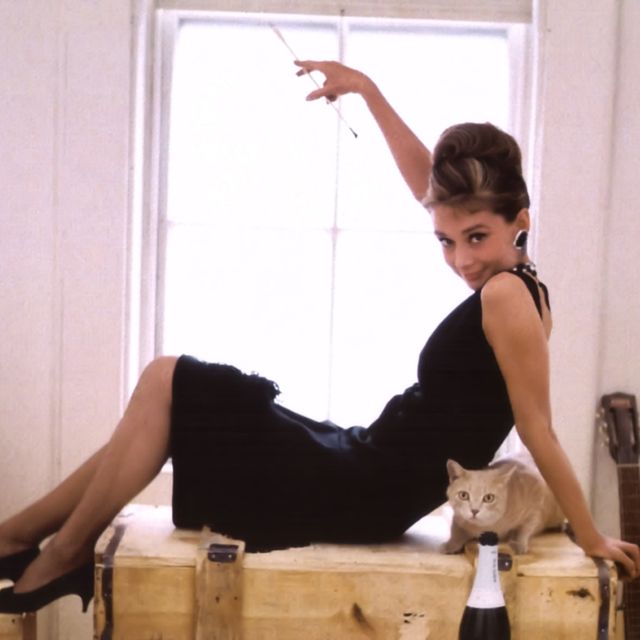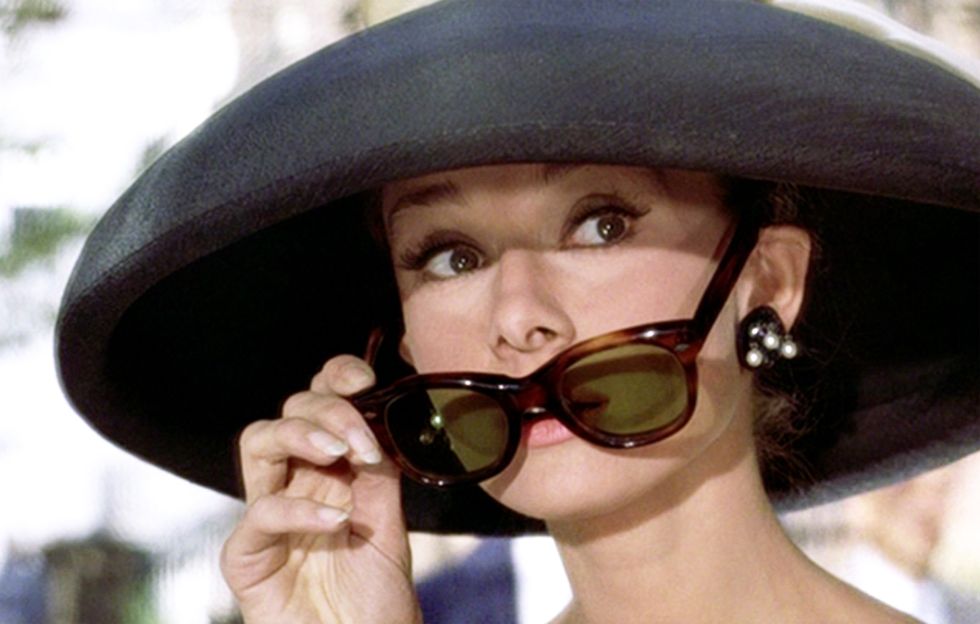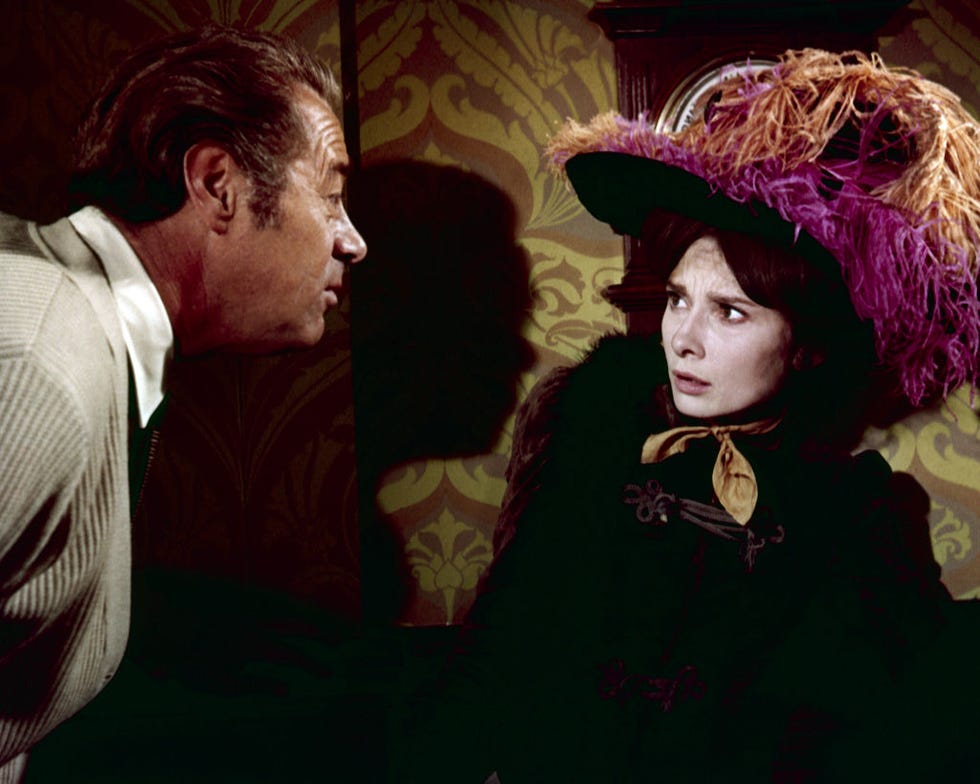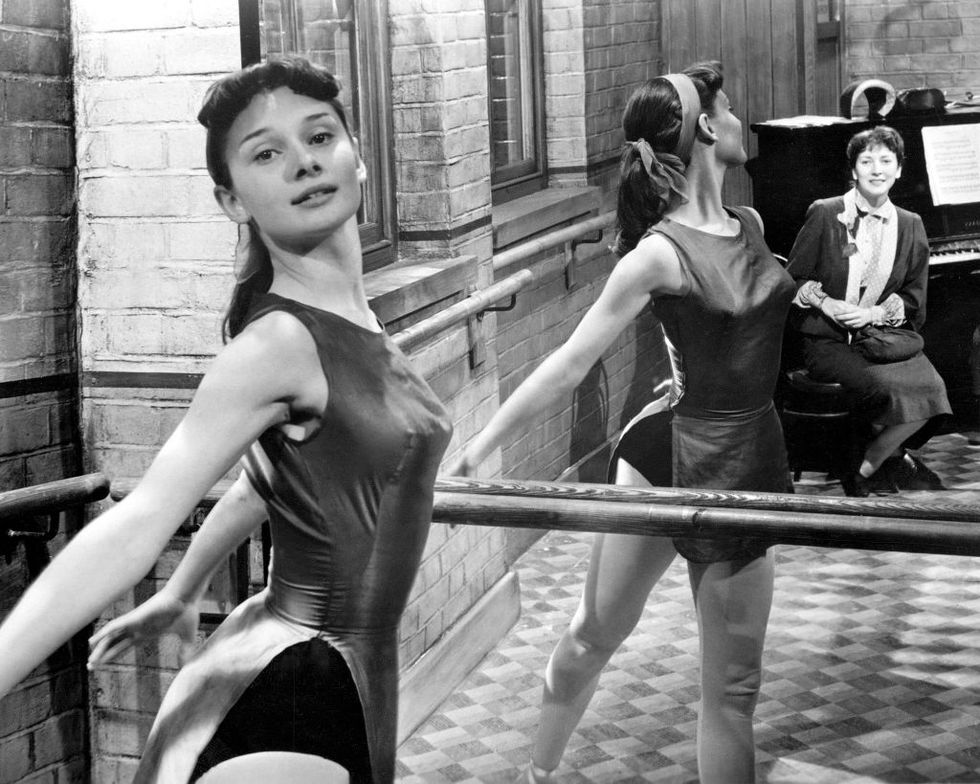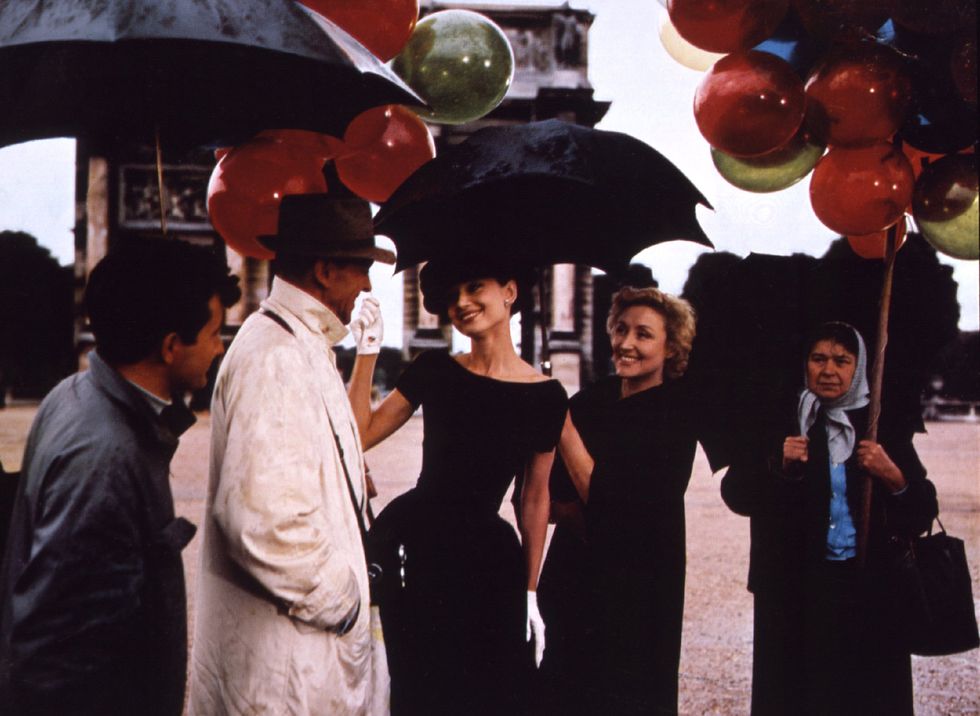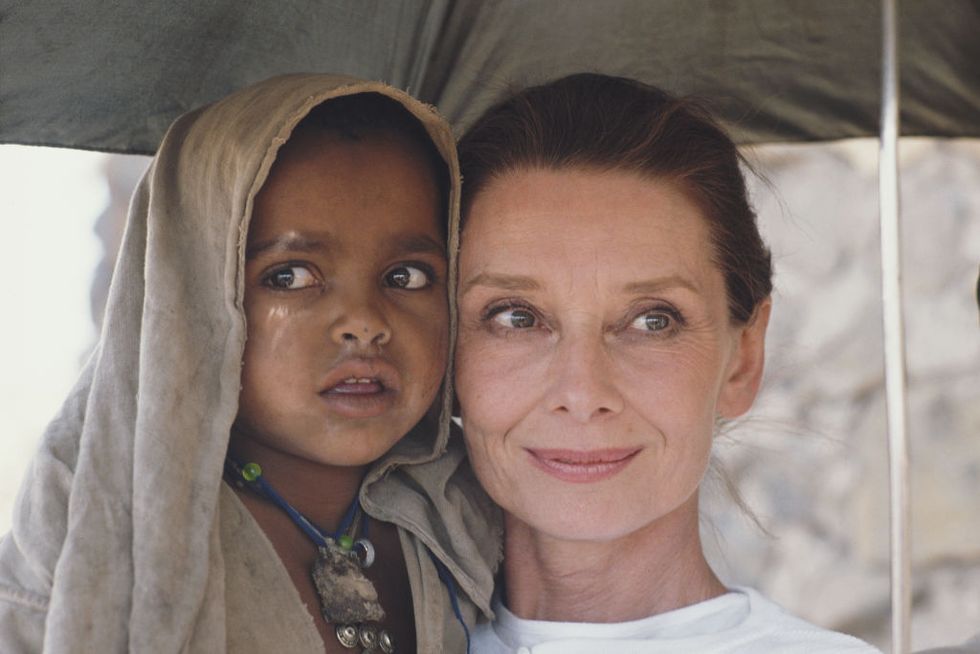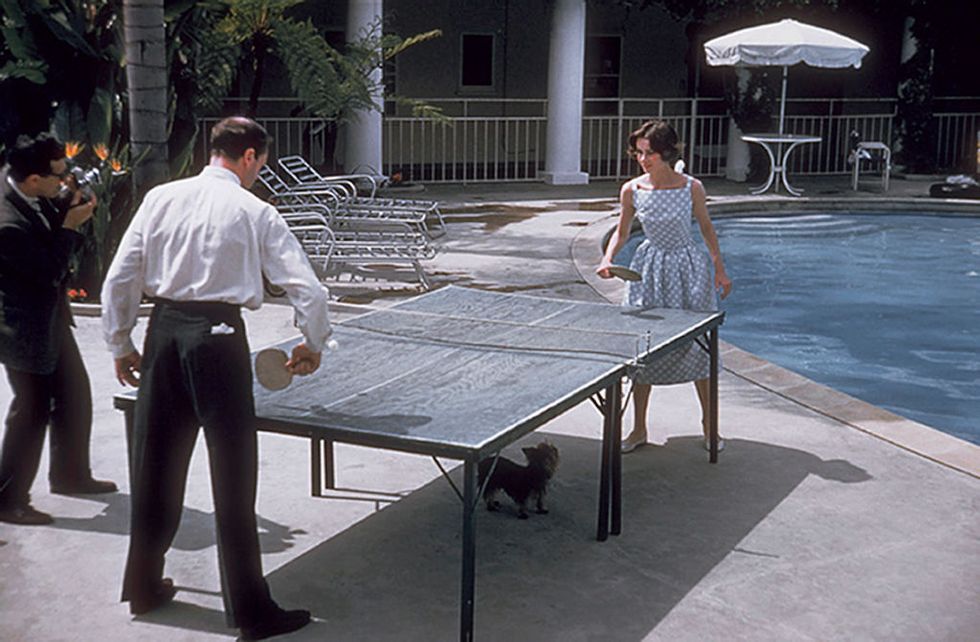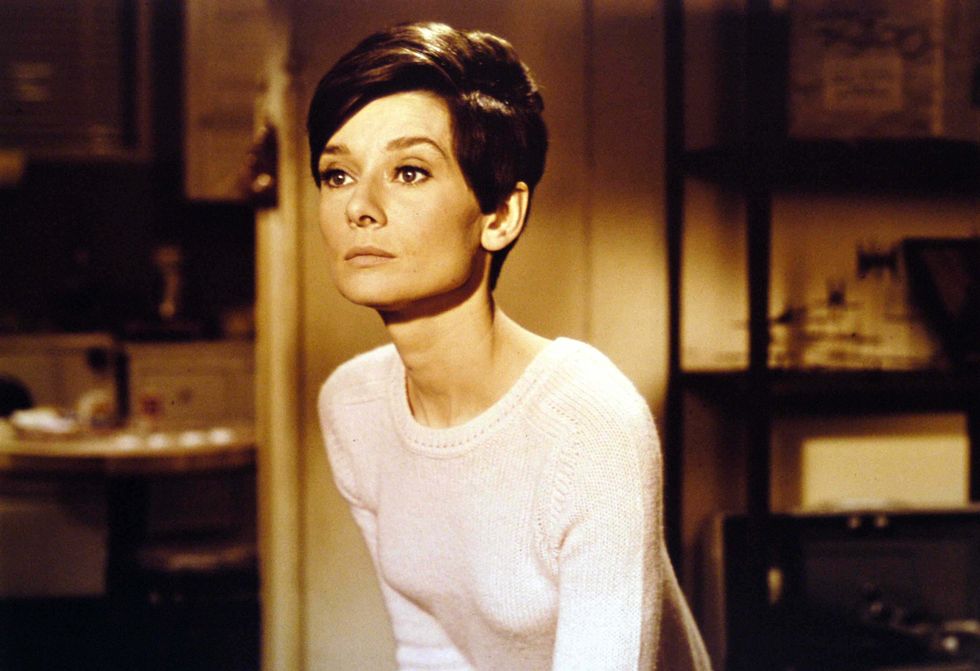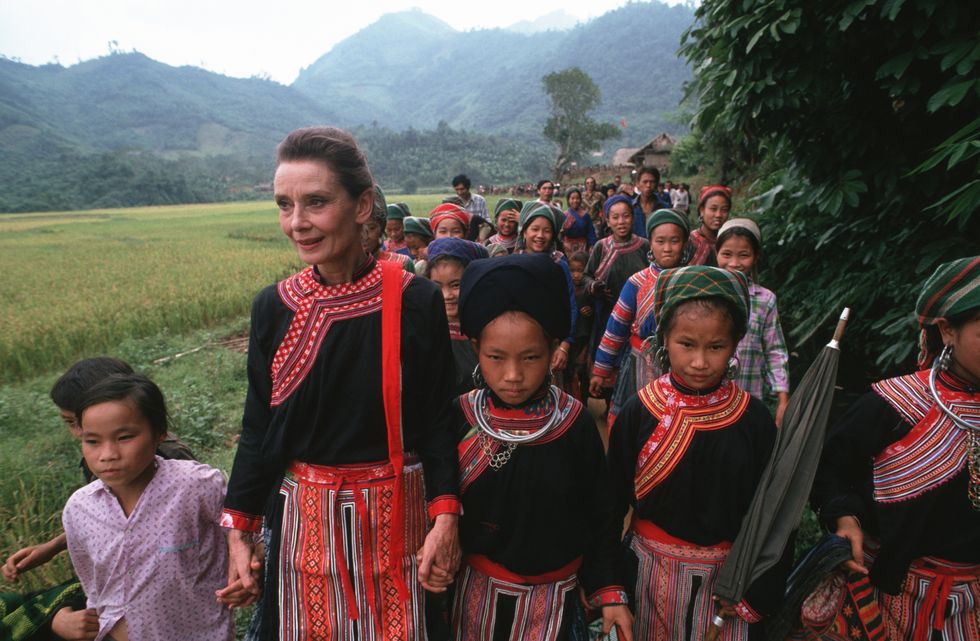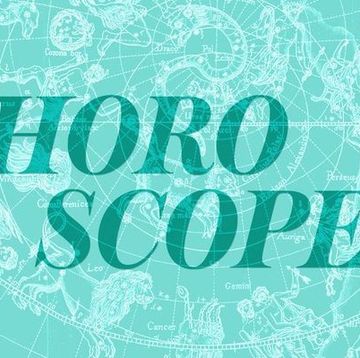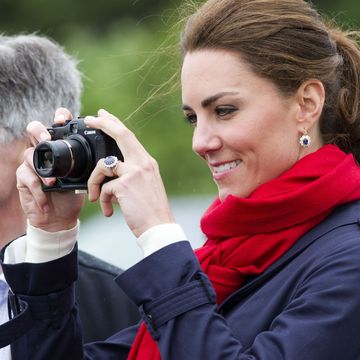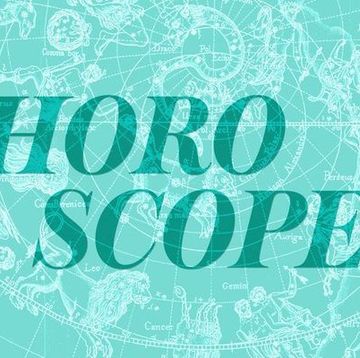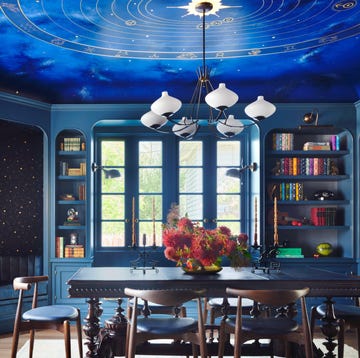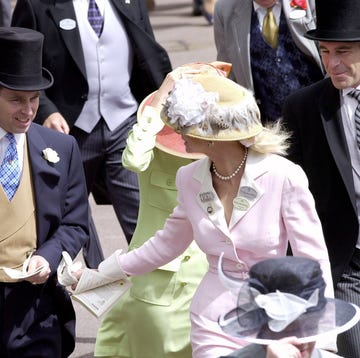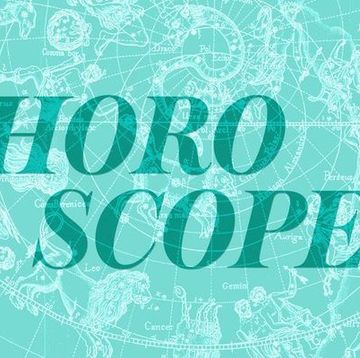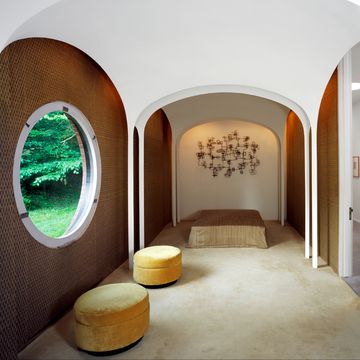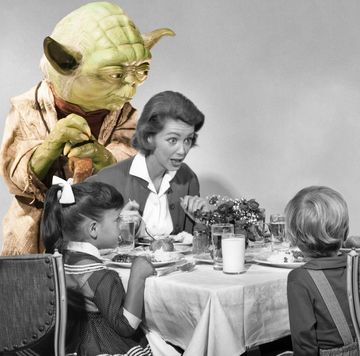This article originally appeared in the May 2003 issue of Town & Country.
Most movie stars have their fifteen to twenty years of fame, followed by a run of fundraisers and other rare appearances, perhaps some made-for-television movies or a short-lived series, before their careers gradually decline and they slowly fade out. It’s a familiar pattern. Upon their death, there may be admiring eulogies, a flattering obituary in The New York Times and a few seconds of tribute on the late-night news. That’s if they’re lucky.
Then there are the few—the precious few—whose memory lives on, partly because their body of work stands the test of time, partly because their mystique remains intact but mostly because their fans refuse to let them die. Elvis, of course, is one of them. Bigger than life, controversial, overmedicated and overweight—a talented, troubled, lovable mess of a man.
In sharp contrast in almost every way imaginable is another icon—this one a slender, quiet, unassuming, gentle and enchanting wisp of a woman who preferred marriage and motherhood to fame and fortune, eschewed the limelight and spent her final days in poverty-stricken Third World countries, comforting children with AIDS and other infectious diseases. Her name is Audrey Hepburn.
Ten years after her death in 1993, she seems as vivid as ever. Young girls still model themselves after her gamine look. Fashion designers continue to be inspired by her. The very mention of her name elicits oohs and aahs from women the world over. Her films remind us of her elegance and playful innocence. And whether in movies or photographs, she charms us unfailingly.
What was it about Audrey Hepburn? Perhaps it was her arrival at a time—the early ’50s—when the big screen was dominated by buxom, blonde sex symbols such as Marilyn Monroe, Jayne Mansfield and Mamie Van Doren. They seduced, they smoldered, and they oozed an unsubtle sensuality—not exactly the kinds of girls nice boys brought home to meet mother.
Along came this tall, flat-chested, properly dressed, waif-like creature with her huge brown eyes, boyish haircut and lilting voice. She quite simply bowled us over. Bill Wilder, who directed her in two movies, supposedly said, “This girl single-handedly, make bosoms a thing of the past.” And she nearly did.
Audrey Hepburn made just twenty-seven films in forty years, but almost every one of them is worth watching at least once, and many are as fresh when seen a third or fourth time as they are the first.
Since her death, several books, a number of documentaries and countless tributes have been produced, almost to a saturation point, where it not for the fact that we never seem to get enough of Audrey. For this special portfolio, Town & Country spoke with three of the people closest to her; her elder son, Sean Hepburn Ferrer; her dear friend, Connie Wald; and her companion for the last years of her life, Robert Wolders. Our sincere thanks go to all of them.
Some Facts About Audrey
There is a great deal of lore surrounding so private a person (just as there is around Jackie Kennedy Onassis). Legions of admirers all over the world and especially in Japan, where Audrey is idolized, have nearly committed to memory the following:
- Audrey was born in Brussels on May 4, 1929 (her mother was a Dutch baroness, her father and Anglo-Irish businessman), and she died of colon cancer at her home, La Plaisible, in Tolochenas, Switzerland, on January 20, 1993.
- She grew up in Holland during World War II and suffered its hardships greatly (including near-starvation, which led to anemia and supposedly accounted for her rail-thin frame).
- She studied ballet and dreamed of becoming a ballerina. When she realized that this dream would not come true, she was crushed.
- Her first big break occurred in the early 1950s at the Hotel de Paris in Monte Carlo, when the author Colette noticed her by chance (Audrey was there for a small part in a movie) and insisted that she play the title role in the Broadway production of her novella Gigi.
- About the same time, she was screen-tested for the role of the young princess opposite Gregory Peck in Roman Holiday. She easily got the part, even though she was a virtual unknown. Thanks to Peck, she was given costar billing. Roman Holiday was a huge hit, and at twenty-four years old, Audrey Hepburn won her first Academy Award. This was the star of a spectacular run of films: most memorably, Sabrina, Funny Face, Love in the Afternoon, The Nun’s Story, Breakfast at Tiffany’s, Charade and Two for the Road.
- The French couturier Hubert de Givenchy played a huge part in Audrey’s life by designing some of the most elegant clothes she wore in Sabrina and most, if not all, of her wardrobe in seven other movies. He also created a fragrance, L’Interdit, for her in 1954. It was introduced to the public in 1957 and reintroduced last year by Parfums Givenchy. Givenchy’s contribution to the “Audrey look” can never be overstated. He became one of Audrey’s closest friends.
- Truman Capote never wanted Audrey to play Holly Golightly in Breakfast at Tiffany’s. His choice: Marilyn Monroe.
- Were it not for Audrey’s insistence, that is stay, the Henry Mancini/Johnny Mercer song “Moon River” would have been cut from Breakfast at Tiffany’s—and with it the expression “huckleberry friend.”
- When she first met Cary Grant, at a bistro in Paris as they were about to start filming Charade, she accidentally tipped over a bottle of red win, which spilled all over Grant’s cream-colored suit. Typically gracious, Grant simply removed his jacket, and the conversation continued, barely missing a beat.
- Audrey won the role of Eliza Doolittle in the film version of My Fair Lady over Julie Andres, who had played Eliza on Broadway. It was probably the most controversial episode in Audrey’s career. For the first time, she came up against criticism, in this case from supporters who wanted Andrews to star in the movie. In addition, key people involved in the musical did not feel Audrey could carry off the Lerner and Loewe score; her voice was dubbed by veteran singer Marni Nixon. It was a great disappointment to Audrey.
- She was married twice—to actor Mel Ferrer, then to Italian psychiatrist Dr. Andrea Dotti—and bore two sons, Sean Ferrer and Luca Dotti. Both marriages ended in divorce.
- Audrey also had a brief but intense relationships with two of her leading men: William Holden and Albert Finney. She met Holden while filming Sabrina, and Finney when they starred together in Two for the Road.
- She spent the last thirteen years of her life with Robert Wolders, who was her constant companion. Because both Audrey and Wolders were of Dutch origin, they had a language in common. They also had many mutual interests (including a love of animals, especially their dogs) and acquaintances. After her divorce from Andrea Dotti, they lived peacefully and happily in Switzerland. Wolders accompanied Audrey on all of her trips for UNICEF, and he was at her side, with her two sons, when she died.
Her Son
The only child from Audrey Hepburn’s marriage to Mel Ferrer, in 1954, Sean Ferrer shares his recollections of his mother:
Audrey was my mother and my best friend first. Then I realized she was an actress. Then I realized she was a pretty good actress. When I was growing up, there were always paparazzi around, but you got used to them after a while. Was she beautiful? I think she was beautiful because of who she was.
She was a great mother who took care of me. She did all the things that mothers do: she woke me up early; she helped me with my homework; she took me to the movies.
She died ten years ago this past January, and while she is no longer here, she seems to be everywhere. The fact is that the mythical Audrey—her mystique—is stronger than ever.
My mother was a modest woman, who was in awe of those people she referred to as “thinking” actors—Hank Fonda, Greg Peck. I don’t know if she herself was a thinking actress, but I do know that she was a feeling actress. Behind those beautiful eyes were real emotions, emotions that connected with the audience. Acting came naturally to her. Of course, it helped to have a good voice—a gentle voice with strength. You knew that she was definitive about what she said because of how she said it.
Audrey brought out the best in everybody. For instance, I never saw anyone misbehave in her presence in social situations. She always gave you the sense that there were boundaries that were not to be crossed. I remember hearing that, upon meeting her, Britain’s Queen Mother murmured, “She is one of us.”
But my mother was as gentle as she was strong—the velvet glove and the iron hand. She was a self-made person. Her father left her and her mother when Audrey was very young. She developed a lot of character. And while she was a loving mother and a friend, she was also clear about what she expected of us. Like everyone else, we didn’t want to disappoint Audrey Hepburn.
I was born in Lucerne in 1960. In 1964 we moved to La Plaisible, where I stayed until 1969, so I grew up in the country—the house was on a big farm with beautiful fruit trees. I went to school with the sons and daughters of the neighboring famers. I had a real childhood. My mother had pretty much retreated from the movies, so we had a normal family life. We went shopping; we went to the market.
We always had big houses, but they weren’t like the one in Gosford Park. Although my mother knew that life because her own other was born into it, she chose not to live it. And while we were used to having a driver (who was also our gardener), a cook, two maids and, when we lived in Italy, a nanny for Luca, my mother didn’t order people around. She chose to do a lot of the housework herself. She cooked very well. And her meals were colorful; she didn’t like platters of gray matter.
The breakup between my mother and father [Mel Ferrer] was hard. But I had a feeling something was wrong—children sense these things. She sat me down in the bedroom and gave me the news. Then she took me to see The Jungle Book, so as far as I was concerned, it was a good conclusion.
We lived in a huge apartment in Rome when my mother was married to Andrea [Dotti]—it had once belonged to a cardinal and had high ceilings and frescoes. It must have been 12,000 to 15,000 square feet. But it was in the center of the city, and in the summer Rome gets very hot, so we moved to another big apartment in Rome’s Parioli district. When Andrea and my mother separated, she moved into a little house with a garden in the same district. She loved her garden and regarded it as a working garden, cultivating the plants and then using the flowers in our house.
In Rome, however, Andrea had once almost been kidnapped for ransom, so I was sent to boarding school in Switzerland, where my mother thought I would be safe. She said to me, “You can stay with us and a bodyguard, or you can go to Switzerland and have a normal life.” I was thirteen. I went to Le Rosey. After I got my French baccalaureate, when I was seventeen, I enrolled in international law school in Geneva. But after my second semester, I left to try my hand in the movie industry.
My mother spoke French or Italian at home and was fluent in Dutch, German and English. She didn’t talk much about her movies. In fact, she wasn’t really a film buff. And contrary to popular belief, she didn’t collect many of the clothes from her films.
Audrey really wanted to be a ballet dancer, but she grew too tall and was told she could never be a prima ballerina. And her lack of nutrition didn’t help
She was happiest in Switzerland, but it was strenuous when my grandmother came to live with her for the last ten years of her life. How shall I put this? Their personalities were not well suited. My grandmother was a grande dame from another century. She was a baroness, born in 1900. Her father was a governor of Indonesia, and then of Suriname.
Hubert [de Givenchy] was always part of our lives. He was the kind of man she could have married. They loved and admired each other.
Of all her movies, I think my mother was proudest of The Nun’s Story. It was a wonderful serious script, not at all fluffy. Since only a small part of her face showed, it required a lot of craft.
She also loved doing Funny Face. It brought out the dancer that had been bottled up inside her for all those years. She didn’t much care for Paris When It Sizzles. As for Charade, she loved working with Cary [Grant] and said what an extraordinary person he was.
My favorite of her movies? The same as her—The Nun’s Story and Funny Face.
Nine years ago, Luca and I created the Audrey Hepburn Children’s Fun to encourage those in the entertainment business to help suffering children around the world. After her death—she got sick and died so quickly— it seemed like the right thing to do. My mother truly believed that the greatest crime was to rob a child of his or her childhood. The more horrors she saw in her work with UNICEF, the angrier she became at the injustices.
We now share her anger. So I ask anyone who has respect or a tender though for her to help us. As long as we have enough people pushing in one direction, we can make a difference. This requires us all to stop what we are doing and pay attention to the problems of the world’s children. Now.
Her Friend
Connie Wall was one of Audrey’s closest confidantes. She was married to Hollywood producer Jerry Wald and has lived in the same house in Beverly Hills for sixty-two years, a house that Audrey called home whenever she visited Hollywood. It is a cozy place, filled with memorabilia, first editions and her husband’s Irving G. Thalberg Memorial Award. Here, her recollections:
She was such a fabulous lady. There was never anyone like her. I simply loved her. We had common tastes. We both loved our houses, our families. We both liked to cook.
She loved it here. It was like her house. (She actually had an architect come here so he could design a smaller version of our house for her in L.A., but she never got to build it.) She hated to go to parties when she was here, but when she did, she was always the most beautiful woman there. All she really wanted was to have dinner in the kitchen, not even in the dining room. When Audrey and Rob came, I would prepare her favorite: my chicken salad. Before dinner she’d have her Scotch and a cigarette. She usually wanted a green apple for dessert, and she loved chocolates.
We’d cook together. Sometimes we’d have a party at home for friends—Willy and Talli Wyler, Billy and Audrey Wilder, the Jimmy Stewarts, the Cary Coopers and the Ray Millands.
Audrey never lost her charm or her enchantment. I feel fortunate to have had a friend like her in my life. She was such a humanist. I credit Audrey with awakening the world to the problems in Somalia.
After Somalia, she came to stay with us; this was in 1992. Then she and Rob went to New York. She wasn’t feeling well, so she went to the doctor, thinking that maybe she had picked up something in Somalia, but it wasn’t so.
She was still staying with me when she really became ill. She never complained. She always thought of other people. She was so thoughtful, so kind. Even in good health, she seemed frail, but she was as strong as can be.
Her home in Switzerland was a dream house. Audrey liked nesting there. It was where she could restore all her energies. And, oh how she loved her garden—she had planted ‘Queen Elizabeth’ roses in part of it, and there was a cherry orchard beyond one wall.
Her staff were with her forever. When she was ill, her maid, Giovanna, flew here with tow of Audrey’s dogs, whom Audrey adored. Giovanna worshipped Audrey and would do anything for her.
When she loved, Audrey have her heart. And she was so beautiful. Mel and Audrey were like a couple of Modiglianis. And they had exquisite taste.
But her greatest happiness was with Rob. They met here, in this very house. Rob’s wife, Merle [Oberon], had just died (Rob was wonderful with Merle). One nigh when Audrey was coming to visit, I asked Rob to dinner. It worked. They gradually fell in love and became so happy.
Audrey devoted her life to her children, but when she was making movies, she worked very hard. No one understands what it took to work on a movie in those days. Hollywood, you see, was a working community. You’d have to go to bed early—by 8:00 P.M.—in order to be rested and look good the next day.
The camera loved Audrey. She illuminated the screen and is still the greatest inspiration in the world for young ladies. She was just perfect. But she was also simple. She had a modest wardrobe compared to most women’s. Most of her gowns were borrowed. She usually dressed in blue jeans and Lacoste shirts at home.
I miss her terribly.
Her Soul Mate
Robert Wolders entered Audrey Hepburn’s life at a pivotal moment. Her second marriage, to Andrea Dotti, was troubled. Dutch-born and from a solid family, Wolders—strikingly handsome, intelligent and soft-spoken—had briefly considered a career as an actor and then became a private investor. In 1973 he married actress Merle Oberon, who was twenty-five years his senior. Oberon died in 1979. Though they never married, Audrey and Wolders slowly and carefully built a relationship that became one of the most important and binding in her life. He was everything she wanted and needed in a companion—strong, stable, kind and caring. They adored each other. Here are his memories:
Audrey realized early in life that self-worth could not be based on fame or beauty. The public sensed her modesty. That was a large part of her appeal, I think. When we first met, at Connie’s, I got a kick out of exchanging a few words with her in Dutch. But I thought that would be it. Six months later, I had to be in New York. Connie said, “You should call Audrey,” who was working on They All Laughed with Peter Bogdanovich and staying at the Pierre.
I finally called a couple of days before I was to leave and asked if she could have a drink or dinner the next night. She said that, unhappily, she couldn’t because she would be shooting in the evening. I took it as a gentle brush-off.
The next day the phone rang. It was Audrey, telling me that the shoot had been cancelled and asking if we could have a drink. I said yes, but only a drink because I had dinner later with friends.
I suddenly felt inspired—also because she called me Robbie. Only family and Merle called me Robbie.
We met downstairs at the Pierre. One and a half hours later, we were still there, well past the time I was supposed to meet my friends. She asked if I would order her a plate of pasta. Of course, I couldn’t say no.
When I returned to L.A., I had a sudden urge to call her. That led to further phone calls (I found out later that she had me in mind for her ex-sister-in-law). Then one day she called, and afterward I said, “That’s it, I have to go to New York.”
We had to be very discreet—she was still married, even though unhappily, to Andrea. So our relationship was slow in developing. Eventually, we realized the only thing to do was for me to move to Europe and live in Switzerland, where she had kept her house. At first, she would go back and forth to Rome, and I would return to L.A. When her divorce became final, we were together all the time. It seemed so very natural. I accepted our relationship readily.
Her humanitarian efforts began when we went on a trip to China for a UNICEF function. Someone from the UN heard her speak passionately about the suffering of children. When we got back to Switzerland, the head of UNICEF asked her to be a representative. It was a perfect association. She had experienced poverty and malnutrition firsthand; she had observed so many injustices during World War II.
Audrey and I initiated many of the trips. Each time, she deliberated carefully over whether she could make a difference. She studied endlessly and became extremely knowledgeable. But she was not trying to be Mother Teresa or vying for sainthood. We traveled seven months every year for five years—to Ethiopia, Sudan, Eritrea, Somalia, Kenya, Bangladesh, Central and South America, India, Vietnam and Thailand. Somalia had an extraordinary effect on her. She saw the dead bodies of children. It was like hell on earth. Also, the trip was so closely connected to her illness—it was where she first began to have symptoms. But she remained fearless and determined.
Maybe it was because we’d been living such an idyllic existence in Switzerland that we realized there was more to life than that. Audrey was always aware of problems in the world. Indeed, she’d go into a funk if she heard about a massacre in Africa. I think she was relieved to know she could do something ab out the world’s problems. I needed that sense as well. We thought as one; we were fighting together on the same battleground. And even though I knew the text of every speech she gave for UNICEF, I as sometimes moved to tears when I heard her deliver it. She exuded such purity, innocence and vulnerability, and, at the same time, utter conviction. It made me tremendously proud.
Between our travels for UNICEF, we would return to Switzerland to repair. It became our haven. When she became ill, it was shocking. We’d been so happy and lived such a quiet life there. Then she became a target for the paparazzi. I’d have to chase them away; they were climbing over the hedges. I hated them.
In L.A., the surgeons offered to operate on Audrey on a Sunday, to avoid the press. But even so, a tabloid reporter bribed a nurse to say that Audrey had only three months to live.
We returned to Switzerland for good in December 1992. With the help of Bunny Mellon, Huber [de Givenchy] chartered a plane to fly us home. Sean and I handled the intravenous feedings and the pain medications.
We didn’t want her to know her condition was terminal. We were eager to remain positive. But it’s been my suspicion over the years that she wanted to hide her knowledge of condition from us. She never feared death. She told Sean she was afraid only of pain.
I would say to myself, “This can’t happen to someone so precious.”
She was much more realistic. She’d say, “Why not me?”
Maybe, I’d wonder, it would have been better if we hadn’t traveled to all those difficult countries and witnessed all that hardship. But Audrey would say, “Think of all we would have missed.”
She was right, of course.
